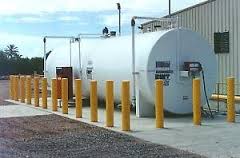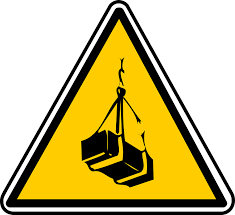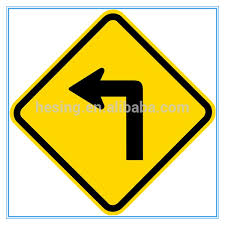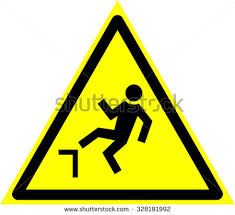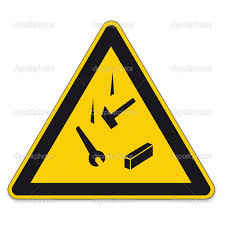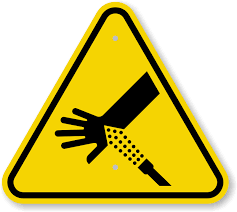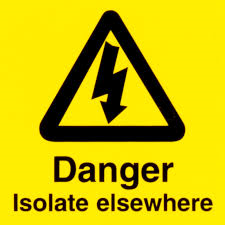Information
-
Select your Project
-
Planned HSE Inspection - Bulk Combustible Liquid Storage
-
Conducted on
-
Inspection conducted by:
BULK DIESEL STORAGE FACILITY
-
Enter location of bulk diesel liquid storage is located
-
The hazard inspection must be conducted by a Supervisor and/or Safety and Health Representative and/or an employee, as follows:
1. For EVERY inspection requirement, indicate the item as Compliant (C), Non-Compliant (NC) or Not Applicable (N/A)
2. For every non-compliance identified, provide the location and a description in the comments section. Note: Include positive comments on section. Note: Include positive comments on compliance, not just negatives
3. Enter defects or non-compliances in the applicable site registers, i.e. electrical equipment defects must be entered into the Electrical Register
4. At inspection completion, discuss the non-conformances with the Area Superintendent and determine an action, completion date and responsible person - enter this in the agreed actions section of this form
5. Forward the completed inspection to the Safety Department
6. The Safety Department is to check that ALL identified non-conformances for that month have been corrected and or entered into INX. -
Take photo of bulk combustible liquid storage
-
Are bund walls and floors made of impervious material? i.e. either a concrete or high-density polyethylene (HDPE) plastic-lined earthen bund
-
Is bund appropriately sized for amount stored in it? i.e. every bund should have capacity for 110% of largest vessel or 25% of total stored, whichever is the largest percentage
-
Are tanks located more than 1m inside bund?
-
Is emergency shutdown switch for diesel pump easily accessible, clearly marked?
-
Are DANGER, NO SMOKING, NO NAKED FLAME signs in place at facility?
-
Are fire extinguishers available and are they in-date? i.e. check the service date
-
Is the diesel pump operation warning light clearly visible?
-
Are access steps to bulk tanks (over bund walls) in good condition and not reducing bund integrity?
-
Is there adequate access systems installed to perform dip readings?
-
Are tank identification numbers clearly visible on all diesel tanks?
-
Is housekeeping maintained to standard? i.e. bunds free from water, silt, litter
-
Is piping/hoses properly stored? i.e. clipped in place, not left on driveway
-
Are bund walls and floors in good condition? i.e. no evidence of cracking/damage
-
Can apron and drive over bunds contain spills when transferring diesel to tanks?
-
Can apron and drive over bunds contain spills when refueling a vehicle?
-
Are dispensing nozzles in holsters?
-
Are bund valves in closed position?
-
Is bund in good condition? i.e. no evidence of spills/stains external to the bund
-
Are spill kits located nearby and are they fully stocked?
-
Are all hoses, connections, valves, flanges free of leaks and obvious deterioration?
-
Does bunded area drain/slope away from tank to a sump that is connected to an oil/water separation facility?
-
Is sump or separation facility in good condition and adequately maintained? e.g. sediment levels low, enough freeboard
-
Are bins appropriate - colour coded, correctly labeled, waste properly segregated? i.e. no controlled waste in general waste bins
BULK OIL STORAGE FACILITY
-
Enter location of bulk oil storage facility
-
The hazard inspection must be conducted by a Supervisor and/or Safety and Health Representative and/or or an employee, as follows:
1. For EVERY inspection requirement, indicate the item as Compliant (C), Non-Compliant (NC) or Not Applicable (N/A)
2. For every non-compliance identified, provide the location and a description in the comments section. Note: Include positive comments on section. Note: Include positive comments on compliance, not just negatives
3. Enter defects or non-compliances in the applicable site registers, i.e. electrical equipment defects must be entered into the Electrical Register
4. At inspection completion, discuss the non-conformances with the Area Superintendent and determine an action, completion date and responsible person - enter this in the agreed actions section of this form
5. Forward the completed inspection to the Safety Department
6. The Safety Department is to check that ALL identified non-conformances for that month have been corrected and or entered into INX. -
Take photo of bulk oil storage facility
-
Are bund walls and floors made of impervious material, either concrete or HDPE-lined earthen bund?
-
If it is an earthen bund, is the HDPE liner easily inspected and in good condition? i.e. no holes or tears
-
Are all waste oil drums/bulk containers located within a bund?
-
Are DANGER, NO SMOKING, NO NAKED FLAME signs in place at facility?
-
Are fire extinguishers available and are they in-date? i.e. check service date
-
Are access steps to bulk tanks (over bund walls) in good condition and not reducing bund integrity?
-
Are ladders secured to the bulk oil tanks for recording dip readings?
-
Is housekeeping maintained to standard? i.e. bunds free from water, silt, litter
-
Is bund appropriately sized to contain spills from tanks, drums and bulk containers within it? i.e. every bund should have capacity for 110% of largest vessel or 25% of total stored, whichever is the largest percentage
-
Is piping/hoses properly stored? i.e. clipped in place, not left on driveway
-
Are bund walls and floors in good condition? i.e. no evidence of cracking/damage
-
Can apron and drive over bunds contain spills when transferring oil to tanks?
-
Are all pipes above ground to and from the bulk oil tanks?
-
Can apron and drive over bunds contain spills when removing oil from tanks?
-
Are dispensing nozzles in holsters?
-
Are bund valves in closed position?
-
Is there any evidence of spills/stains external to the bund?
-
Are spill kits located nearby and are they fully stocked?
-
Are all hoses, connections, valves, flanges free of leaks and obvious deterioration?
-
Does drainage of bunded area slope away from tank to a sump or oil/water separation facility?
-
Is sump or separation facility in good condition and adequately maintained?
-
Are bins appropriate - colour coded, correctly labeled, waste properly segregated? i.e. no controlled waste in general waste bin
-
Is there any evidence of weed infestation?
Sign Off
-
Person conducting inspection:
